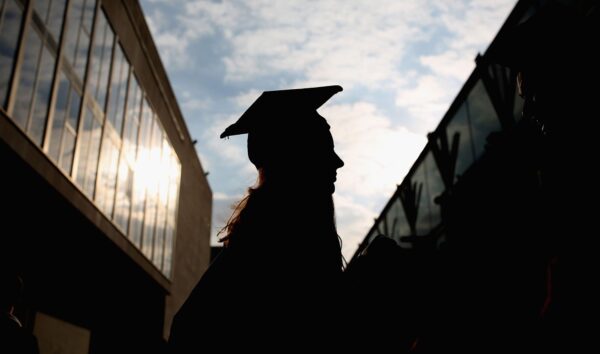By Claire Ballentine and Ella Ceron
For student loan borrowers, President Joe Biden’s forgiveness plan seemed too good to be true. And now they fear that maybe it was.
Earlier this month, a federal judge in Texas struck down the program, the latest blow in a series of legal challenges that have upended the initiative. Borrowers are currently unable to submit applications to have up to $20,000 forgiven, and they’re losing hope that the debt relief will ever happen.

The Department of Education previously warned of a wave of defaults when payments restart, especially as stubbornly high inflation, punishing housing costs and a growing number of job cuts cascade through the economy. Although the White House announced Tuesday that the pause in payments will be extended through June 30, financial advisors say borrowers should prepare to face those monthly bills again.
Many aren’t sure how they’ll afford it.
“It’s been a rollercoaster,” said Kayla Walker. “I’ve written it off now. I feel like it’s unlikely to happen.”
The 26-year-old from Virginia has about $40,000 in federal student debt and another $7,000 in private loans. She applied for forgiveness when the application opened, but cynically views the plan as “an election point” that politicians used to garner votes.
As she prepares to face a $185 monthly bill for her federal loans when payments restart — plus the $130 payment for her private ones — Walker is considering moving back in with her parents.
“It’s all been really up in the air and hard to make decisions without knowing what’s going to happen with loan forgiveness,” she said. “If these loans restart, there’s no way my monthly budget can account for that.”
Uncertain Path
More than 26 million borrowers have already submitted the information needed to be considered for Biden’s plan, which would forgive $10,000 for those who made less than $125,000 in 2020 or 2021, or married couples who made under $250,000. Pell Grant recipients could have up to $20,000 forgiven under the program. Those people are now in limbo, as the legal battle potentially heads to the Supreme Court.
Mariah Jae, a 31-year-old from Brooklyn who works in health care compliance, graduated college in 2013 with about $20,000 in federal student loans. She currently has about $10,000 left, meaning Biden’s forgiveness program would wipe out her debt.
If payments do resume, she’d be facing a $440 monthly bill, which would be “incredibly difficult.”
“I already live paycheck to paycheck,” Jae said. “Maybe I couldn’t afford my apartment. It would be a big lifestyle change.”
According to the Federal Reserve, borrowers were billed an average of $393 each month before the pandemic. A recent survey from the Student Debt Crisis Center found that almost nine in 10 borrowers are worried about affording payments when they restart, due to inflation cutting into their budgets.
The payment freeze, as well as pandemic stimulus payments, allowed some borrowers to stop living paycheck to paycheck and save money, said Soraya Joseph, senior managing editor for financial-literacy platform The Financial Diet. Now, she’s urging people to create a contingency plan for when payments start up again.
“At the end of the day, it is essential for people to keep in mind that payment deferred does not mean payment deletion,” she said.
Refund Reversal
Some borrowers who have already received refund checks from the government are worried they’ll have to pay them back.
As part of the Covid-19 stimulus program, those who made payments during the pandemic are eligible to get the money back, which some are requesting under the assumption that they’ll have at least $10,000 forgiven. If the debt cancellation doesn’t happen, they may be on the hook to repay that money.
“It’s pretty depressing,” said Maura McBride, a 25-year-old in Milwaukee. “Even though I got money back, I’m afraid that I’ll have to pay it back, and if not I’m sad for my friends that still have their loans.”
She graduated with about $15,000 in student debt and paid $10,000 off during the pandemic. She’s received $6,000 in refunds so far and is waiting on an additional $4,000.
For Rebecca Acuna, a 27-year-old legal assistant in Indiana, the potential for cancellation feels like a waiting game. She has about $22,000 in federal loans and $4,000 in privates ones. Since she was a Pell Grant recipient, she should theoretically get $20,000 forgiven, but that’s all uncertain now. “I’m devastated,” she said. “I just can’t fathom how I’m going to be able to afford the payments, on top of predatory interest rates resuming. It all seems hopeless.”
(Updates throughout to reflect extension of the payment pause through June 30.)
More stories like this are available on bloomberg.com.




